Affiliate disclosure: This post may contain affiliate links. Please see our Privacy Policy.
Aronia wine is a delicious way to use a fresh harvest of Aronia berries. They’re naturally tannic and just a bit acidic, so all you need is a bit of sugar for a perfectly balanced red wine with a lot of character. Use honey instead for aronia mead!
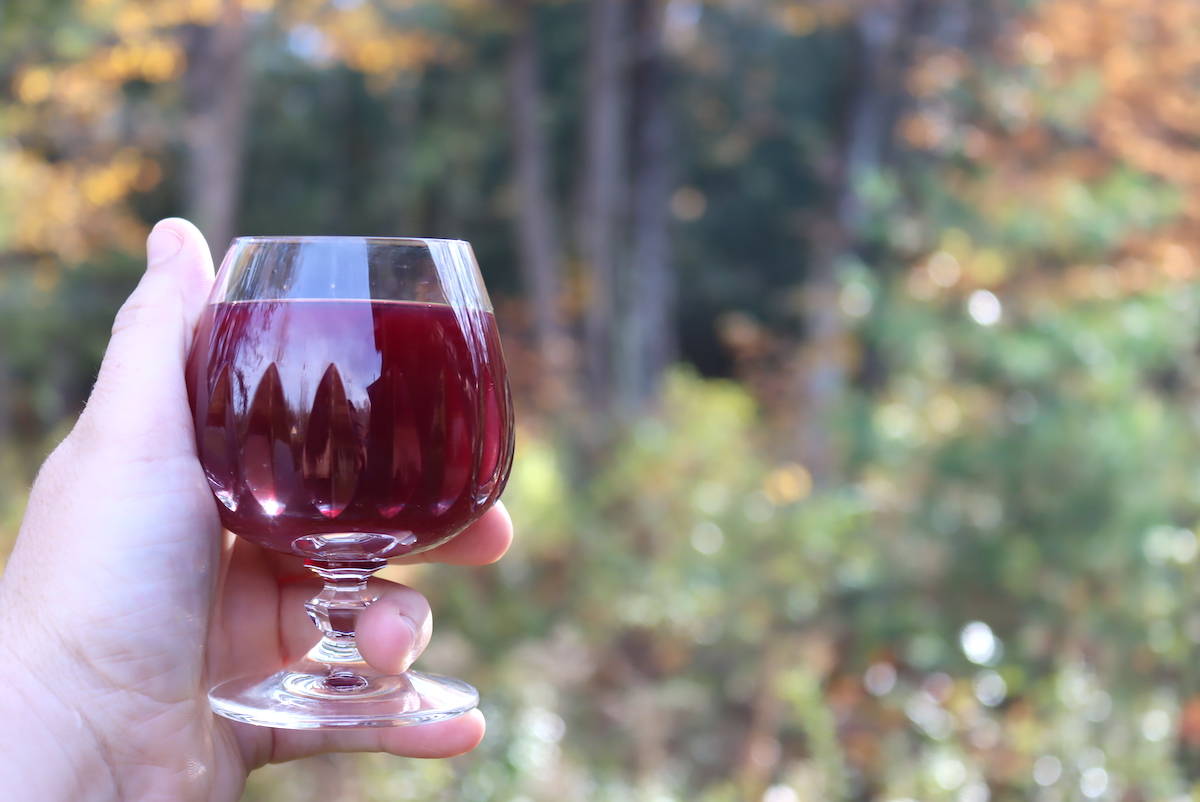
Aronia fruit gets a lot of press these days as a “superfood,” and they’re incredibly full of natural antioxidants. The problem is, they’re not all that tasty to eat fresh.
They’re also known as “chokeberries” because they’re naturally tannic and acidic, both of which make your mouth pucker a bit. You can find jugs of Aronia juice in health food stores, but for the most part, it’s heavily sweetened if it’s going to be used fresh.
There is one place where all those tannins are actually a benefit rather than a problem. That’s homemade Aronia wine!
Harvesting Aronia
Aronia are becoming more popular as a cold hardy permaculture plant, and they’re also often used in ornamental plantings. They have stunning flowers in the spring, which bring all the pollinators to the yard.
You may already have aronia in your neighborhood, but if not, you’ll likely find them around office buildings or suburban developments. A bit of urban foraging is a good way to get a few, and I’d suggest reading this guide to identifying chokeberry before you begin, but you’ll need quite a bit for Aronia wine.
Ideally, you’re growing your own or know someone who is.
You can also buy aronia juice online, but as it’s a “superfood,” it often commands high prices. This wine is pretty darn good, so maybe worth it, depending on your budget. We’re making ours with homegrown fruit.
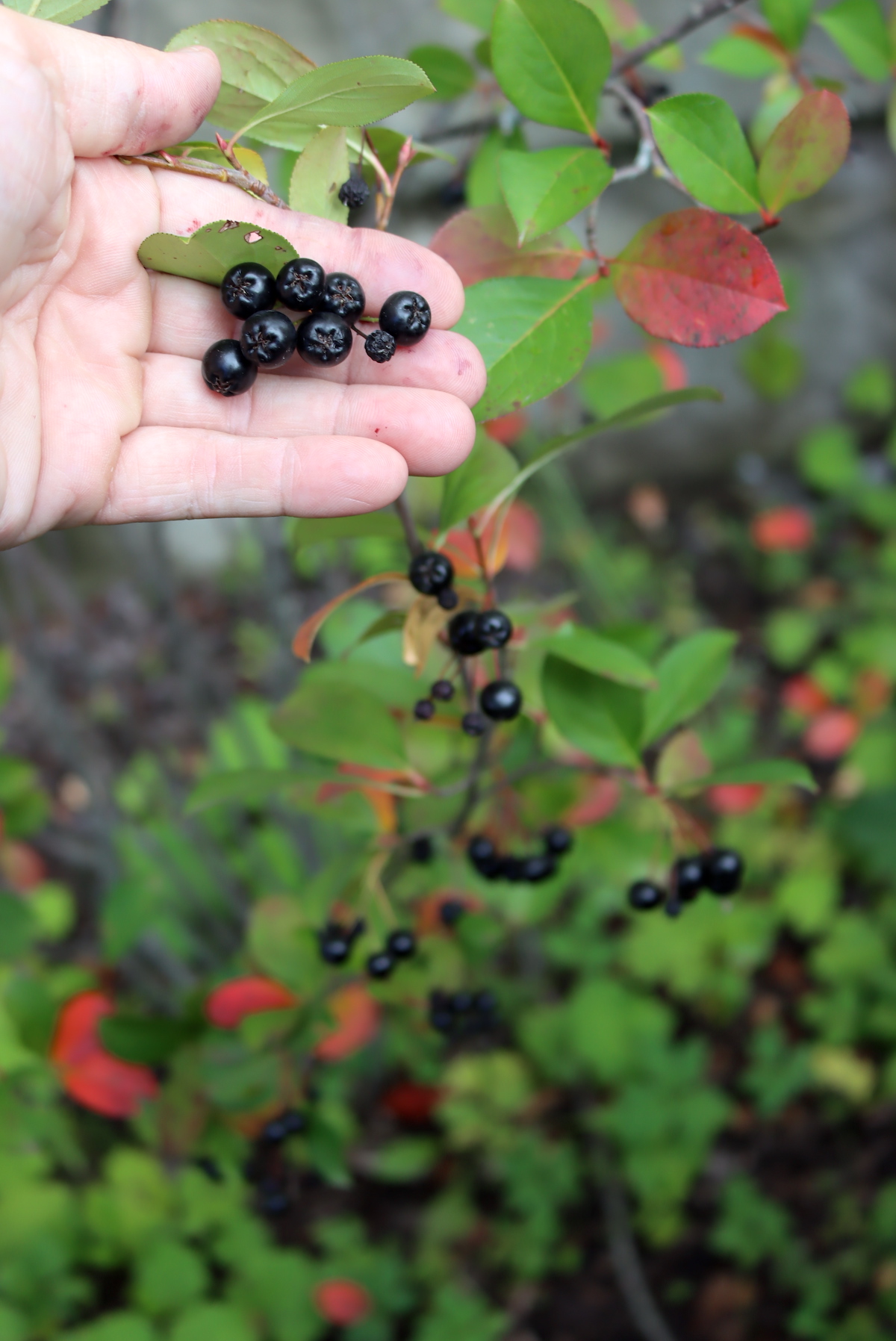
Ingredients for Aronia Wine
To make Aronia wine, you only need a few ingredients.
If you’re new to winemaking, you can read this primer on winemaking ingredients to understand the purpose of each thing here.
For a one-gallon batch, you’ll need:
- 6 to 8 cups Aronia juice
- 2 1/2 pounds sugar (or Honey, for mead)
- 1 tsp yeast nutrient
- wine yeast
- water to fill to make a gallon
This recipe does not contain tannin powder, acid, or pectic enzyme.
Aronia fruit are naturally very low in pectin, so the wine clears on it’s own. They also contain enough natural tannins to give the wine a balanced mouthfeel, and they’re plenty acidic too. If yours are milder, you can try adding in 1/4 to 1/2 tsp of acid blend or 1 to 2 tsp of lemon juice.
To get 6 to 8 cups of aronia juice, you’ll need about 3 to 5 pounds of fresh aronia fruit. That’s if you’re using steam juicer, which is the most effective extraction method. If you’re using another method, you’ll need a bit more.
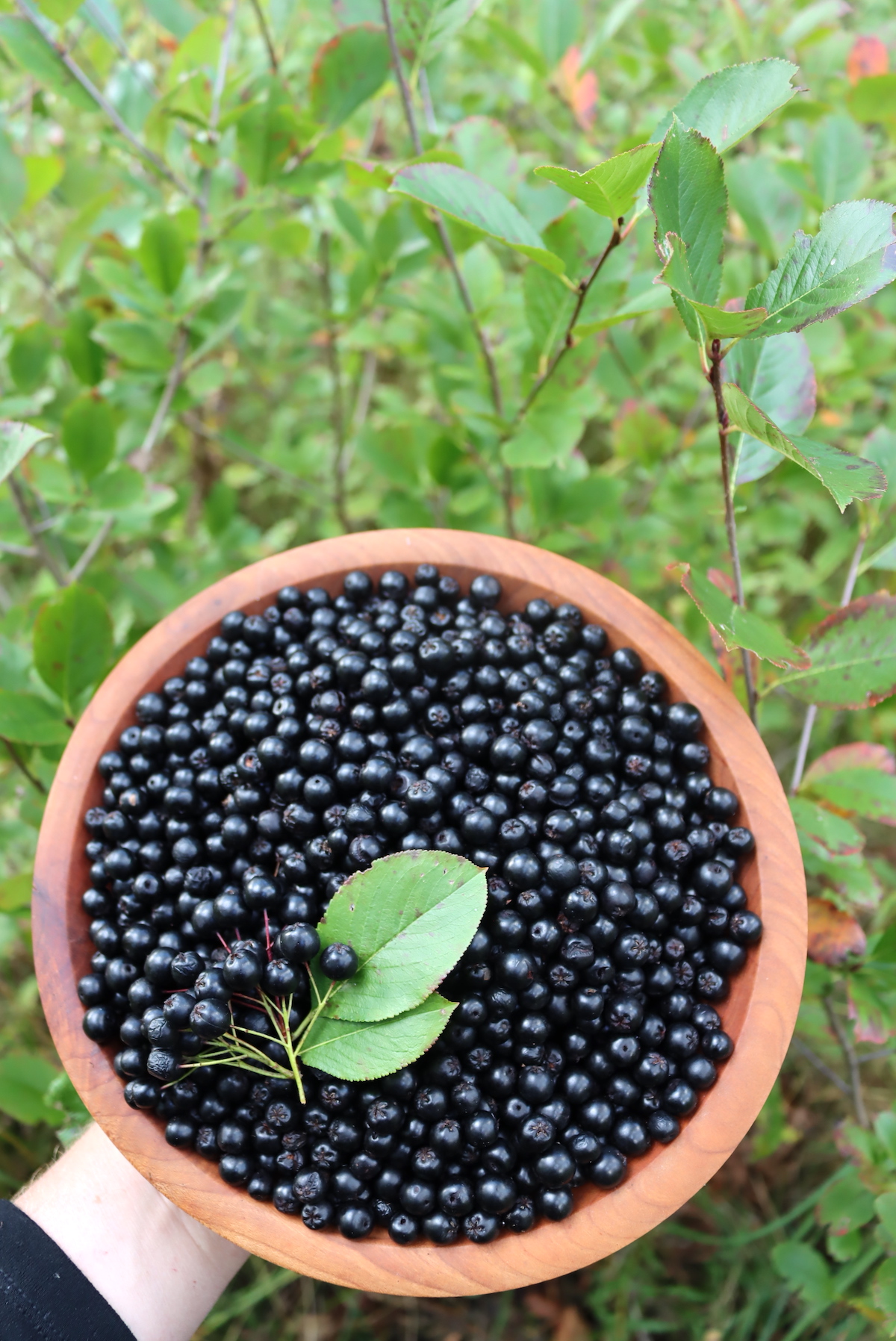
I’ve written this as a quick recipe, assuming you already know basic winemaking practices and terminology. If you’re new to winemaking, these introductory guides will help you:
- Beginners Guide to Making Fruit Wines, where I take you through all the steps in the winemaking process.
- How to Make Mead (Honey Wine) is mostly the same, but there are some particularities when working with honey.
- Equipment for Winemaking, which covers all the durable equipment you’ll need to make your first batch (besides your ingredients).
- Ingredients for Winemaking, which covers all the other things you’ll need (besides yeast).
- Yeast for Winemaking can get complicated quickly, and there are dozens of common strains (and hundreds of obscure ones). Picking the right one is actually pretty important, but I’ve broken them all down for you.
Making Aronia Wine
To make Aronia wine, start by juicing the fruit. If you’ve used a steam juicer, allow the juice to cool completely before proceeding.
Mix the juice with the remaining ingredients, except the wine yeast, stirring to dissolve.
Place everything in a narrow-neck fermentation vessel known as a carboy.
Dissolve the yeast in a small amount of water and allow it to rehydrate for about 10 minutes. Add it to the carboy, and then add water to fill the carboy until it reaches the narrow part of the neck. Seal with an water lock (a one way valve that will allow CO2 to escape, but won’t allow contaminants in).
After 24 to 72 hours, you should see an active, bubbling primary fermentation.
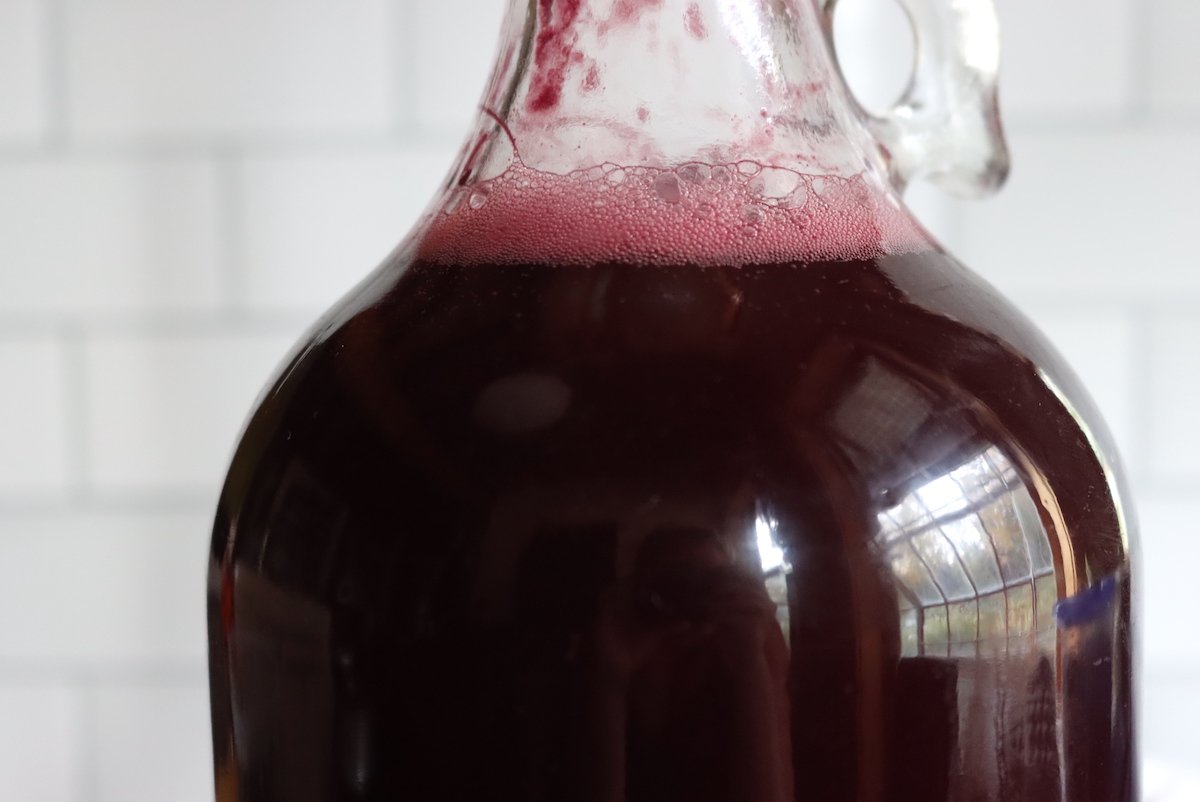
Allow the Aronia wine to ferment for about 10 to 14 days, until the fermentation slows.
At this point, the visible bubbling should have mostly stopped, and you should see quite a bit of sediment at the bottom of the fermentation vessel.
It’s time to use a siphon to move the wine to a clean fermentation vessel, leaving the sediment behind. The wine’s not done fermenting yet, but this sediment can cause off flavors in the finished wine.

Move the wine to a clean carboy, and top with more water to bring it up to the neck of the carboy. This is important, as you’re trying to minimize the surface area exposed to air, and getting it to the neck of the carboy helps with that. Aronia fruits are incredibly concentrated, so don’t worry about watering them down…it’s still going to be very rich as a finished wine.
Seal with a water lock and allow the mixture to ferment for at least another 4 weeks. I found that this one benefitted from an extended secondary, and a lot of the harsher flavors mellowed. I’d actually recommend waiting about 4 months before bottling.
If you’re making mead, the time in secondary is 2 to 6 months, as honey takes longer to ferment fully since it’s less digestible than plain sugar, at least for the yeast.
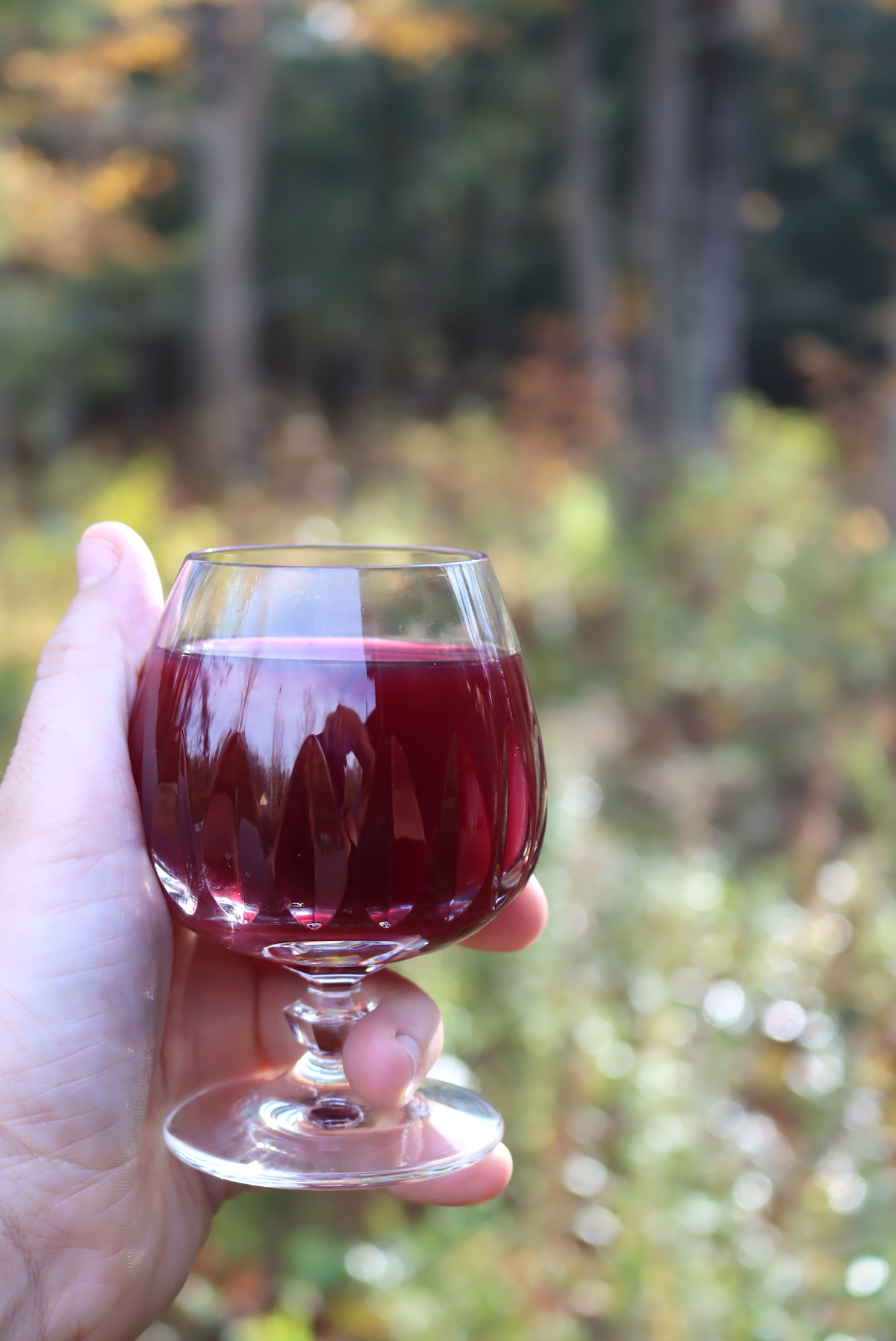
At the end of the secondary, taste the wine, and it should be delicious and just sweet enough to balance the flavors at this point. Otherwise, adjust to your tastes, and if you back sweeten, put it back in to ferment for another month or so before bottling.
Once bottled, allow the wine to bottle-age for at least a month before drinking. This is one of those that gets better with age, so longer than a month is better.
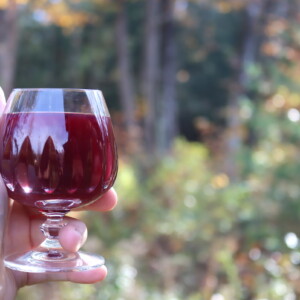
Aronia Wine
Ingredients
- 6 to 8 cups Aronia juice
- 2 1/2 pounds sugar, or Honey, for mead
- 1 tsp yeast nutrient
- wine yeast
- water to fill to make a gallon
Instructions
- Use a steam juicer to juice fresh aronia fruit. You'll need about 1 pound of fruit to yield 1 cup of juice, or a bit more if using less efficient methods. You can also use purchased juice. If you juiced the fruit using heat, allow the mixture to come to room temperature before proceeding.
- Mix the aronia juice with the other ingredients, except yeast, and stir to dissolve. Then place in a narrow neck carboy.
- Dissolve the yeast in a small amount of water and allow it to rehydrate for about 10 minutes. Pour into the carboy.
- Fill the carboy with water if necessary to bring it up to the bottom of the narrow neck in the carboy, leaving about 2 inches of headspace under the airlock.
- Seal with a rubber stopper and air lock and allow the mixture to ferment in primary for 7 to 14 days.
- Use a siphon to rack the mixture into a clean carboy, leaving the sediment behind. Fill with water or apple juice to bring the liquid level up to the carboy neck.
- Replace the water lock and ferment for 4 weeks to 4 months for wine (or 4 to 6 months for mead).
- Bottle the mixture in wine bottles with corks.
- Bottle age for at least 2 weeks, but preferably much longer, before drinking.
Notes
Winemaking Recipes
Keep your carboy bubbling with these home winemaking recipes!
Homemade Drinks
Looking for more homemade drinks?
- How to Make Hard Cider
- How to Make Pear Cider (Perry)
- How to Make Small Batch Wine
- How to Make Homemade Beer
- How to Make Water Kefir (non-alcoholic)
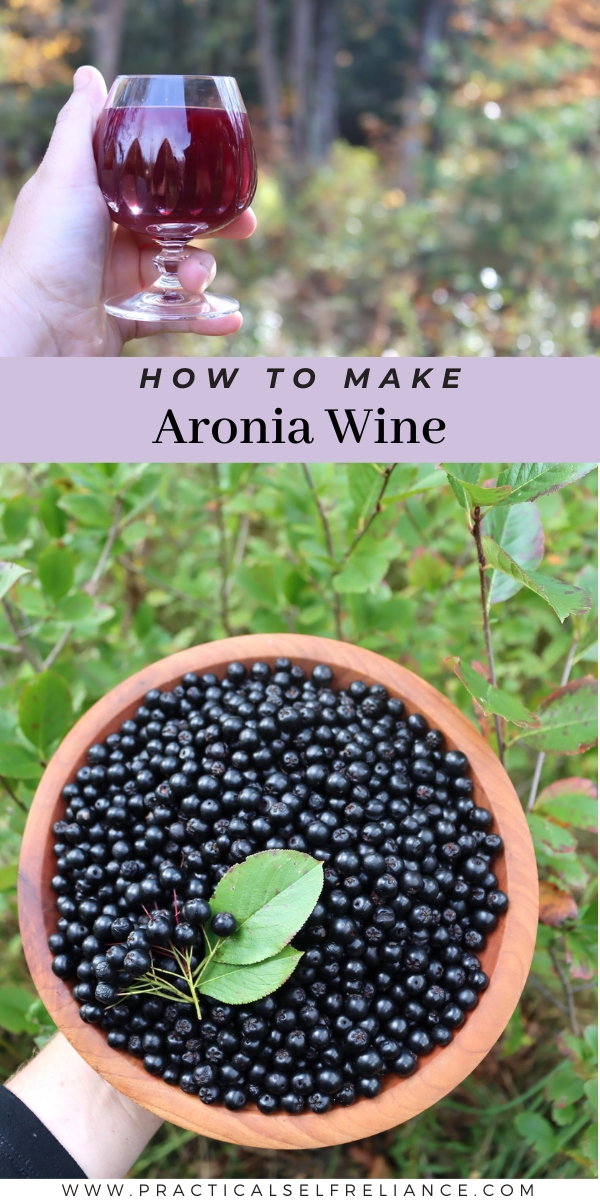
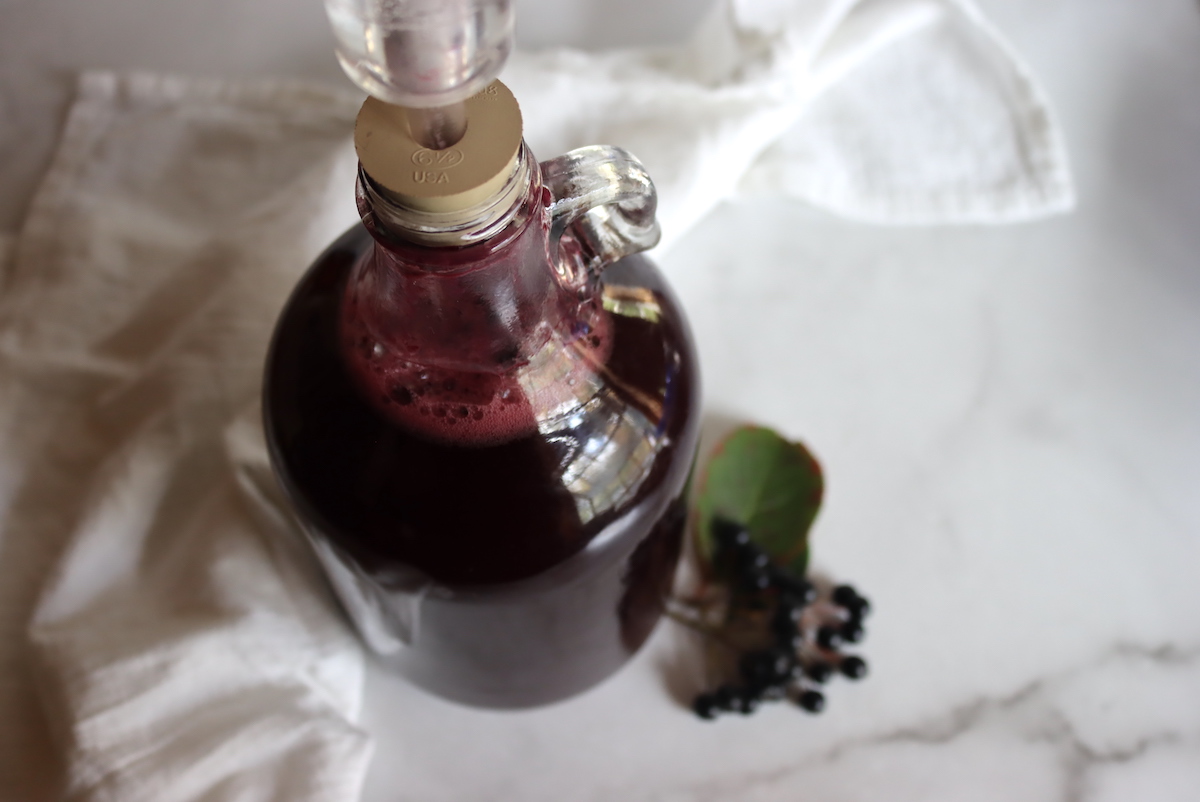



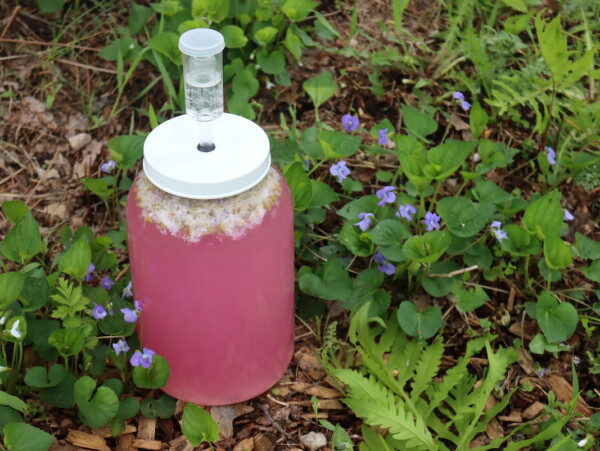
Hello! What type of yeast would you recommend for this wine? Can I use Lalvin D47?
We actually have a great post here that walks you through the different types of yeast and helps you to understand which ones to choose for different types of wine. https://practicalselfreliance.com/wine-yeast/ Check it out and let us know if you have any other questions.
Can screw cap wine bottles be used for the Aronia wine?
Or a tightening wine stopper instead of a cork stopper?
You can do this, especially if you’re doing small batches that will be used up more quickly. Just be aware that you won’t get the same type of seal on a screw top bottle and there is a chance that air, bacteria or yeast could possibly get into the bottle.